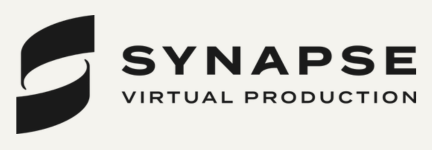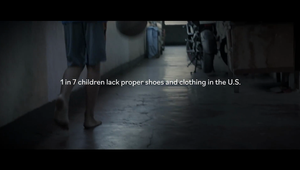
What It Took to Drive the Views Behind Canada’s Viral ‘Look for the Leaf’ Campaign

Last month, Canadian food company Maple Leaf Foods made a huge splash within the country’s advertising ecosystem when it launched a groundbreaking campaign in response to the ongoing trade war and tariffs. Titled ‘Look for the Leaf’, the creative, led by agency No Fixed Address, saw the brand use digital, out-of-home and social channels to emphasise other Canadian food brands that sport the maple leaf – a fitting and timely reminder of all the local options people can choose when out on their weekly shopping trip.
Of course, there was a lot of buzz about the creative. After all, it was the focal point – the thing people were inevitably going to fixate on. However, behind the scenes, there was an unsung hero in play: the team at FUSE Create, who were directly responsible for making sure people got eyes on the work. After all, what good would the campaign be if nobody actually got to see it?
This was something FUSE’s group media director, Rita Steinberg, put a lot of consideration into tackling. Breaking through in a noisy marketplace at a time of political uncertainty was never going to be an easy task, but simultaneously delivering this distinctly Canadian campaign in buzzworthy fashion, across multiple provinces in two different languages, was a tall order indeed, which, ultimately, only left one clear course of action.
“We couldn’t wait to earn attention; we had to take it,” Rita explains. “We had to go beyond typical Maple Leaf Foods’ media playbooks. That meant maximising 100% SOV tactics to command the high ground, making every lower-attention tactic work harder, and dominating high-traffic environments – both digital and physical – while ensuring total alignment between creative and context.”
Delivering a Multi-Channel Knockout
Keenly aware that the campaign’s media success hinged on being impossible to miss and telling a fresh story about Canadian pride, right from the get-go, the team knew it had to go all-in. Focusing on time-boxed intensity (a high-frequency, high-impact media blitz to create urgency and maximise awareness) while leaning on the 48-hour campaign window as permission to be as loud as possible were both good starting points, however, the approach itself would require far more nuance when it came to optimising for the respective platforms ‘Look for the Leaf’ was intended to exist on.
Specifically, with regards to digital-out-of-home, prioritising environments with high dwell time and symbolic national relevance (transit hubs, high-traffic intersections, etc.), according to Rita, was the play. “We even targeted the returning politicians in Ottawa with a special ad placement,” she continues. “These worked because they weren’t just about reach. They added cultural relevance and surprise, amplifying the message both in real-time and socially.”

Strategically, this appears to have been a great decision. Of the campaign’s 31.9 million delivered impressions, 5.2 million came courtesy of this methodology. But, even more impressive were the other 26.3 million impressions that stemmed from digital, which the group media director reveals came from utilising a “flood-the-zone” mentality.
“Where we couldn’t formally take over a platform (Reddit category takeovers, as an example), we flooded it with concentrated spend,” she says. “The contextually relevant placements added cultural weight, and unified targeting created a seamless cross-channel frequency that aided recall. We also prioritised mobile-first formats, thumb-stopping creative, and we ensured the messaging laddered up to a shared Canadian value, making it not just click-worthy, but conversation-worthy.”
All this, combined with high placements with a higher share of voice, platform-specific targeting, and the decision to strategically sync audience targeting across channels to drive cumulative impact and strengthen visibility at every touchpoint, would lead to over 146,000 clicks to campaign’s microsite, with an overall CTR of 0.51%. While this is something the team at FUSE is immensely proud of – especially seeing as it was not a primary objective – what really stood out in this process was just how much the work appeared to resonate on TikTok, which saw the highest CTR of 3.23%.
Reflecting on the data, Rita highlights the nature of the creative itself – authentic and clever – as a key part of this success, emphasising that those two traits usually do well on the platform. However, the invitation to viewers to actually participate in the campaign, combined with the urgency of the concentrated media burst and the curiosity it subsequently generated really lent the work the additional weight it needed in order to break through, regardless of the platform.
“[This outcome] proved that with the right planning, you don’t need a long runway to make a lasting impact,” she adds. “Contextually relevant placements like taking over news sites that have seen higher traffic over the last couple of months allowed us to be part of the conversation. The strategy didn’t just support the creative, it elevated it, showing how media can be the stage that makes a message unmissable.”
Lessons, Best Practices and Optimisations
Despite the success of the campaign and much cause for celebration, Rita and the team at FUSE have also taken ample time since the campaign’s launch to find and reflect upon key takeaways, with the hopes of taking future endeavours to even higher heights.
In particular, Rita says that if there were to be a next time for ‘Look for the Leaf’, she’d want to build more initial infrastructure for brands to co-participate. “Since interest spiked quickly, we’d want to be better prepared to scale that momentum in a meaningful way.”

On a brighter note, however, the group media director feels that the way in which FUSE navigated the fragmented media landscape to create immediate scale – all without overspending – was a strong moment of affirmation, and a good basis for future precedent. Sharing the praise with the team at No Fixed Address, Rita acknowledges that the inherent flexibility of the creative and early alignment on media strategy was a big part of this success, noting that she’s proud of how independently developed media and creative came together so seamlessly to form a single, unified, culture-shaping campaign.
“The key learning from all of this is that when your message is bigger than your brand, people lean in,” she adds. “Best practices depend on the client’s goals. This campaign was an outlier, focused purely on attention and visibility within 48 hours. Typically, we go beyond impressions to drive engagement, and we’ve found you can often do that without sacrificing cost efficiency.”
Adding that another big contributing factor was the boldness of the approach – both in terms of timing and message – Rita concludes that Maple Leaf Foods not putting itself front and centre, as well as the unprecedented nature of the work, were not only tickets for success here, but recipes from which future campaigns can be cooked up.
“[‘Look for the Leaf’] is proof that intensity can often outperform duration, that media and creative can (and should) be developed in parallel, and that a brand doesn’t have to be the hero to lead the conversation,” she finishes. “Maple Leaf Foods’ willingness to share the spotlight made the campaign feel collaborative and not self-serving, which only increased its power. And, the earned media and industry buzz, new brand interest, and results (impressions, clicks, and engagement) speak for themselves."















